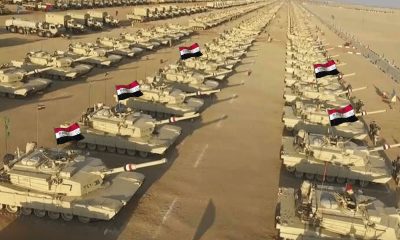Middle East
Yahya Sinwar, Hamas Hunted Leader Remains Committed to Israel’s Destruction
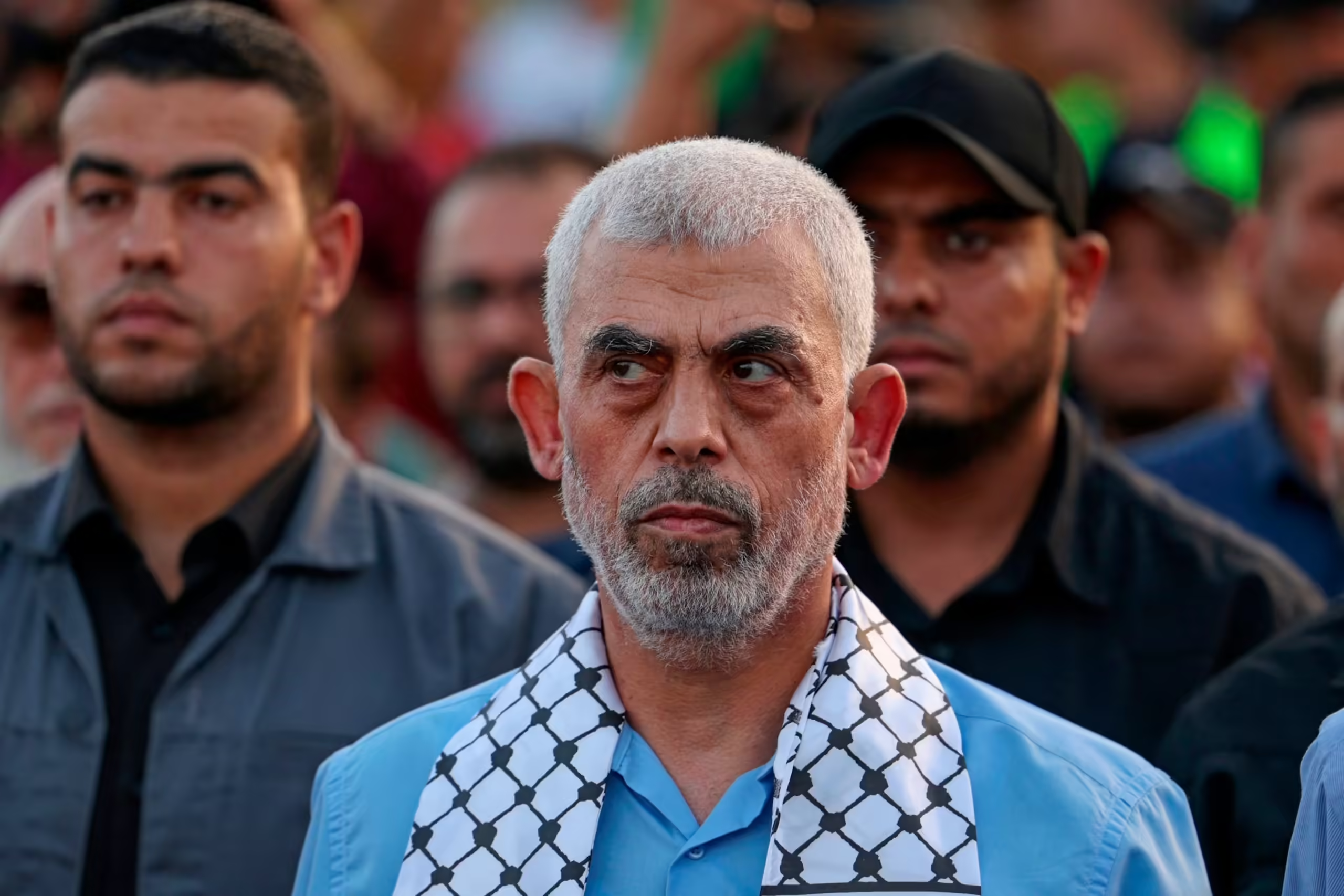
Yahya Sinwar, Hamas’ Elusive Leader, Unyielding in Conflict with Israel
Yahya Sinwar, Hamas’ leader in Gaza, remains resolute in his stance toward Israel, even as his orchestrated Oct. 7, 2023, cross-border attacks have escalated into a brutal conflict that devastated Gaza and sparked widespread regional violence. Sinwar, 62, described as the architect behind these attacks, is committed to armed struggle, believing it to be the sole method to achieve Palestinian sovereignty, according to sources familiar with him. Despite Israel’s retaliatory invasion that has claimed over 41,000 Palestinian lives and displaced nearly two million, Sinwar remains deeply committed to Hamas’ ideological goals of Israel’s destruction, operating from Gaza’s underground tunnels.
The former prisoner, released in a 2011 exchange after serving 22 years for orchestrating killings, has shaped Hamas’ military strategy and forged strong ties with Iran, central to the broader Axis of Resistance. His unwavering ideology, molded by his childhood in Gaza’s refugee camps and imprisonment, underscores his rejection of negotiations, favoring confrontation as the path to liberation. Despite massive Israeli military efforts targeting senior Hamas and Hezbollah leaders, including high-profile deaths, Sinwar remains an influential yet enigmatic figure, reportedly still alive and commanding Hamas.
As Israeli airstrikes continue and Hezbollah in Lebanon faces serious setbacks, the regional conflict shows no sign of de-escalating. Sinwar’s strategy, while bringing the Palestinian issue back into the global spotlight, has left the possibility of a Palestinian state as distant as ever. Yet, his command over Hamas remains solid, sustained by personal and political motivations intertwined with his long-standing role within the movement.
Middle East
Gaza’s Future: Israel Rejects Control, Sparks Debate Over Trump’s Radical Proposal

A senior Israeli diplomat has made it unmistakably clear: neither Israel nor Hamas will govern Gaza after the current war ends. “We don’t want to be there,” declared Tsach Saar, Israeli Deputy Consul General in New York. His comments highlight a pivotal moment for the Gaza Strip, raising urgent questions about the region’s future amid intensifying international involvement.
With Hamas severely weakened yet still entrenched, Israel is determined to eliminate any future threat from Gaza, a sentiment echoed by Prime Minister Netanyahu. The conflict, which erupted dramatically on October 7, has already claimed over 50,000 Palestinian and 1,600 Israeli lives, amplifying international urgency to find a sustainable solution.
U.S. President Donald Trump has ignited fierce controversy with his unprecedented proposal: relocating Gaza’s nearly 2 million Palestinians to other nations and initiating extensive real estate projects. Initially criticized for its extreme nature, the plan has evolved to emphasize voluntary relocation. Still, it has triggered widespread Arab backlash, though Netanyahu praised it as “the first good idea” he’s encountered regarding Gaza.
Arab nations, scrambling to counter Trump’s proposal, introduced an alternative: an administrative committee of independent Palestinians overseeing Gaza temporarily, followed by control transferred to a reformed Palestinian Authority (PA). Hamas and the PA both welcomed this initiative, while Israel dismissed it outright as outdated and unrealistic.
The Israeli government remains laser-focused on completely dismantling Hamas’ military capabilities and governance structures. Meanwhile, Hamas spokesperson Basem Naim asserts the conflict’s underlying issue is the Palestinian right to self-determination, accusing Israel and the Trump administration of aiming to forcibly expel Palestinians from their land.
As Israel’s military campaign continues, the international community watches anxiously, debating Trump’s radical proposals and other diplomatic initiatives. Gaza stands at a historic crossroads: will the territory become a U.S.-led economic project, fall under international administration, or return to Palestinian governance?
One thing remains clear—Gaza’s future is uncertain, and the decisions made now will reshape regional geopolitics for decades.
Middle East
Yemen Bombarded in Retaliation Against Houthi Missile Attack on Israel

The United States launched intense airstrikes against Houthi targets across northern Yemen, dramatically escalating the conflict after the Yemen-based group targeted Israeli territory with ballistic missiles.
CENTCOM confirmed late Friday that multiple strategic strikes were carried out, reportedly hitting cities under Houthi control, including the capital Sana’a, Saada, and the Al Jawf Governorate. Yemeni sources, particularly the Houthi-affiliated Al-Masirah, reported a staggering 24 airstrikes, with at least 14 bombings in Saada alone. Casualties included one civilian death and four injuries, according to Houthi claims.
These US airstrikes followed swiftly after Houthis brazenly fired two ballistic missiles toward Israel, both intercepted by the IDF’s Iron Dome defense system. This aggressive act triggered air raid sirens throughout central Israel, including major cities like Jerusalem and Tel Aviv, bringing the Middle East perilously close to a broader conflict.
The incident reignited recent controversy involving the Trump administration’s security blunder, where sensitive details about past US strikes against Houthi leaders were mistakenly leaked via the messaging app Signal. Notably, intelligence used in these prior attacks reportedly originated from Israel, prompting heated diplomatic tensions over the accidental leak.
The rapid escalation now positions Yemen squarely in the crosshairs of a broader regional confrontation, leaving waryatv.com readers to question whether these strikes represent a decisive step toward neutralizing the Houthi threat or if they dangerously push the region closer to an uncontrollable war.
Analysis
Israel Expands Ground Operations in Syria: What Comes Next?

Strategic Forecast: Israel’s Ground Operation in Syria Marks a New Phase — What It Signals and What May Follow.
waryatv.com | Exclusive Analysis
Israel’s latest confirmed ground operation in southern Syria signals a tactical and strategic escalation that experts say could reshape the current regional balance — or at the very least, spark new responses from Iran-backed militias and proxy groups across the region.
According to Israeli Defense Forces (IDF), the operation was in direct response to gunfire from “terrorists” in southern Syria. In turn, IDF troops returned fire and launched airstrikes that reportedly targeted and destroyed hostile infrastructure near Daraa and Kuwaya. Syrian media claimed four people were killed and that Israeli forces briefly advanced on the ground before encountering resistance.
While Israel has carried out hundreds of airstrikes in Syria over the past decade, its confirmation of ground operations inside Syrian territory is rare — and notable.
“This is no longer shadow war,” said a former EU military attaché in Lebanon who spoke to WARYATV on condition of anonymity. “We are now seeing calibrated but open military incursions with the message: Israel is willing to raise the stakes.”
Why Now? A Multi-Front Reality
According to Israeli security sources and confirmed by former U.S. CENTCOM analysts, the decision to go in on the ground reflects growing Israeli concerns about an expanded threat network stretching from Lebanon to Syria to Iraq. Hezbollah’s deeper entrenchment in southern Syria, combined with Iran’s efforts to transfer precision missile technology through the region, has heightened Israeli fears of a coordinated multi-front war.
“From an intelligence perspective, it’s about timing,” said Michael R., a retired CIA Middle East analyst. “Israel likely detected weapons or personnel movements that crossed their red lines, prompting not just airstrikes, but a need to put boots on the ground to verify, seize intel, or destroy targets directly.”
Former Israeli intelligence officer Yossi K. added that while the operation was short, it was designed to demonstrate capability: “It’s as much about deterrence as it is about degradation. If you can show you’re willing to physically cross the border, you signal to Iran and Syria that the status quo is no longer tolerable.”
Implications for Syria and Iran
Damascus has condemned the operation but is unlikely to respond directly. Instead, analysts believe Iran may task its allied militias — particularly those in southern Syria and the Iraqi border area — with retaliatory actions. Already, some pro-Iranian media outlets have called the operation an act of war.
A former EU intelligence officer based in Brussels told WARYATV, “What we’re watching is not a sudden change, but an escalation of an already intensifying campaign. Israel is shifting its policy from indirect containment to limited offensive disruption.”
He added: “The Iranians will test this. They may not respond immediately, but they rarely allow direct Israeli incursions to pass without attempting a message of their own.”
Red Sea and Gaza Ties
Several Western analysts noted that the timing also aligns with increasing Israeli military action in the Red Sea corridor and against Houthi-linked targets, amid growing fears of a broader Axis of Resistance alignment. There is also speculation that the Syria operation could help relieve pressure from the Gaza front — drawing enemy resources and attention elsewhere.
“It’s classic diversion through escalation,” one European security source said. “If the north heats up, some actors aligned with Hamas could be redirected to a northern theater.”
What Comes Next?
While the IDF has not confirmed further ground missions, all signs suggest this was not a one-off.
“What we are seeing is the start of a new phase: Israel is laying the groundwork for a more kinetic approach in Syria, possibly even clearing corridors for deeper strikes or emergency deterrent missions in the event of northern escalation,” said an Israeli defense strategist now advising a think tank in London.
WARYATV’s sources also noted that civilian evacuations in southern Syria signal anticipation of further activity.
Strategic Forecast
- Israel is moving into a posture of “active forward deterrence” beyond its borders.
- Iran is unlikely to respond directly, but will lean on militias and proxy cells.
- Syria will likely remain passive but coordinate with Iran on information-sharing.
- Hezbollah and the IRGC may test Israeli lines elsewhere — especially in Golan, the Lebanon border, or via Iraqi militias.
- Expect increased Israeli air and limited ground operations in Syria through spring 2025.
This shift, while still short of full-scale war, places the region on a tighter wire.
Exclusive for waryatv.com.
Analysis
Trump Uses SLAM-ERs, JDAMs, Tomahawks in Yemen Campaign

Trump administration intensifies campaign against Iran-backed Houthis using advanced munitions, signaling broader strategic intentions in the Middle East.
The United States has escalated its military campaign against the Houthis in Yemen, deploying some of its most advanced precision-guided weaponry in a series of airstrikes aimed at degrading the group’s operational capabilities. The strikes come amid growing regional volatility, with U.S. and Israeli forces signaling broader strategic intentions that may extend beyond the Houthi threat.
According to The National Interest, the Trump administration has shifted from limited deterrence to direct, sustained action, using a combination of naval and air assets to hit Houthi targets. This follows the group’s continued attacks on international shipping lanes since late 2023, conducted with Iranian-supplied drones and missiles.
The military response from the U.S. has included aircraft launched from the USS Harry S. Truman, cruise missile strikes from USS Gettysburg, and widespread use of precision-guided munitions designed to strike deep into Houthi-controlled territory while minimizing risk to U.S. forces.
Key Weapons Deployed
F/A-18E/F Super Hornets have taken the lead in air operations, equipped with a range of standoff weapons such as the AGM-154 Joint Standoff Weapon (JSOW) and AGM-84H SLAM-ER cruise missiles. These munitions are capable of hitting targets from long distances, staying clear of Houthi air defenses, which have been bolstered by Iranian support.
The JSOW, a glide bomb with GPS and infrared terminal guidance, allows for pinpoint accuracy from up to 70 miles. It is stealthy, difficult to detect, and versatile, with variants for penetrating hardened targets or dispersing submunitions.
Meanwhile, the SLAM-ER brings advanced mid-flight retargeting capabilities and a two-way data link, enabling operators to adjust strike parameters in real-time. With a range exceeding 150 miles and a 500-pound warhead, it is particularly suited to neutralizing Houthi command and control centers or missile storage sites.
JDAMs (Joint Direct Attack Munitions), though less technologically complex, remain a critical part of the arsenal. These kits turn conventional bombs into precision-guided weapons using GPS, with the ability to strike within a 16-foot radius in all weather conditions. Dropped from high altitudes, JDAMs offer cost-effective and reliable firepower.
Finally, the Tomahawk cruise missile, launched from surface ships like the USS Gettysburg, remains a strategic workhorse. With a range of up to 1,500 miles and advanced guidance systems including GPS, TERCOM, and DSMAC, the Tomahawk is ideal for striking deeply entrenched targets with minimal warning.
Why These Weapons Matter
The munitions deployed reflect a calculated strategy: suppress Houthi capabilities from a distance, avoid American casualties, and prevent escalation with Iran, all while sending a clear message of deterrence. These strikes are not random; they’re designed to degrade infrastructure used to launch anti-ship attacks and build momentum toward a larger strategic objective.
The use of these systems also highlights the limitations of the Houthis. Despite their use of Iranian-provided ballistic and cruise missiles, their ability to counter high-precision, standoff weapons remains limited. This technological imbalance reinforces the U.S.’s ability to project power in contested regions.
Strategic Implications
The strikes against the Houthis may be a tactical response to maritime threats, but they are unfolding within a broader context. The reopening of Israel’s southern front against Hamas, coupled with reported preparations for joint Israeli-American strikes on Iranian nuclear facilities, suggests that the region could be entering a more expansive and volatile phase.
If strikes against Iran materialize, the attacks on the Houthis—seen as Iranian proxies—may be viewed not as isolated events but as the opening salvos in a broader regional confrontation.
Conclusion
The U.S. campaign against the Houthis marks a shift in posture under President Trump, moving from defensive deterrence to proactive, high-tech strikes aimed at dismantling hostile capabilities. The use of precision-guided weapons reflects not only military efficiency but also a strategic calculus that places Yemen within a larger arc of tension between Washington, Tehran, and their respective allies.
As the region teeters toward further escalation, the current operations may well serve as both deterrent and dress rehearsal for potential conflicts to come.
Analysis
Israeli Forces Escalate Strikes, Threaten Annexation of Gaza Amid Tense Negotiations
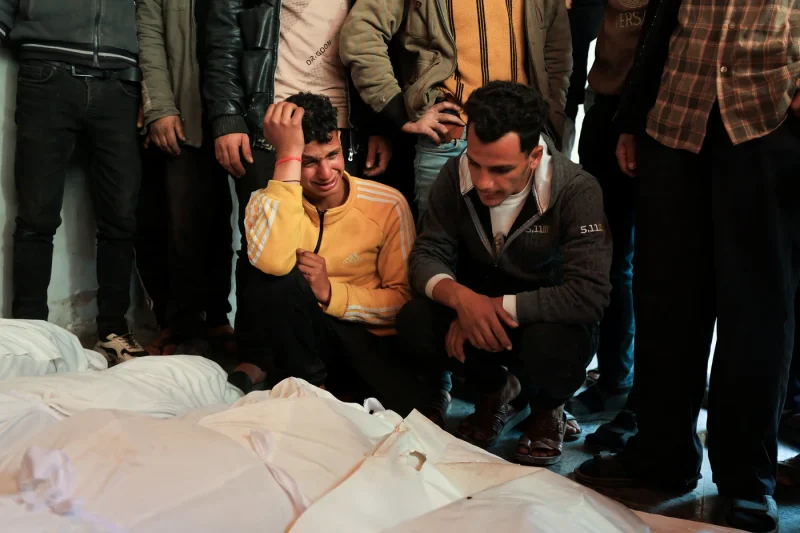
Israel’s latest military operations spark global concern, with Trump’s envoy hinting at a temporary Hamas stay under strict conditions.
The ongoing conflict in Gaza and Israel’s military strategies have deep historical roots, interwoven with decades of geopolitical tension, shifting alliances, and complex international relations. Here’s a comprehensive analysis that covers the history and potential future implications of these strategies from various angles:
The foundation of Israel in 1948 and the subsequent Arab-Israeli war laid the groundwork for ongoing regional conflicts. Gaza has often been a flashpoint in these disputes, with its geopolitical significance magnified by its location and the density of its population.
Hamas’s emergence in the late 1980s as a significant force in Palestinian politics changed the dynamics in Gaza. Its control over Gaza since 2007, following a conflict with the Palestinian Authority, has led to a series of military confrontations with Israel, shaped by the organization’s refusal to recognize Israel and its stated aim to liberate Palestinian territories.
Israel’s blockade of Gaza, in place since 2007 and supported by Egypt, aims to prevent arms from reaching Hamas but has also led to severe humanitarian issues. This blockade has been the backdrop for various military operations, each resulting in significant casualties and destruction.
Current Scenario
Israel’s recent military strategies, including targeted assassinations and threats to annex parts of Gaza, aim to degrade Hamas’s capabilities. However, these actions also risk escalating violence and worsening humanitarian conditions. The assassination of a Hamas intelligence leader signifies a tactical move to weaken the militant leadership directly.
The ongoing conflict has devastated Gaza’s infrastructure, with significant impacts on health, sanitation, and food security. The UN’s warnings of a humanitarian crisis underscore the severe consequences of continued military actions without robust humanitarian corridors.
The role of international actors like Egypt, Qatar, the US, and others in mediating ceasefire talks highlights the complex international stakes involved in the Gaza conflict. Each player brings different priorities and influences, affecting the negotiation dynamics.
Future Implications
The current trajectory suggests a bleak outlook for immediate peace. The cyclical nature of conflict in Gaza, driven by deep-seated grievances and geopolitical strategies, poses significant challenges to lasting peace agreements.
Increased calls for investigations into actions by both Hamas and Israeli forces reflect a growing international appetite for accountability and adherence to international law. How this will influence future military and diplomatic strategies remains to be seen.
The situation in Gaza influences global policies on military engagement, humanitarian aid, and conflict resolution. The international community’s response, including potential shifts in policy or increased diplomatic engagement, could set precedents for handling similar conflicts globally.
Conclusion
The Gaza conflict is a manifestation of broader regional and international tensions, with deep historical roots and complex future trajectories. Understanding this context is crucial for any meaningful analysis of the situation and for crafting strategies that address both the symptoms and root causes of the conflict. Each development in the region could potentially reshape the broader Middle East’s geopolitical landscape, making it essential for international observers and stakeholders to maintain a close watch on unfolding events.
ASSESSMENTS
UAE Eyes Major Stake in US AI Sector with $25 Billion Investment
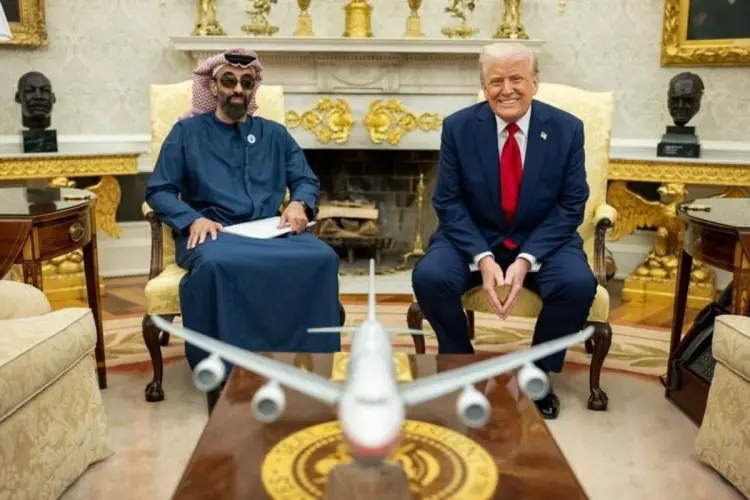
The recent announcement of the United Arab Emirates (UAE) to significantly ramp up its artificial intelligence (AI) investments in the United States marks a pivotal shift in both technological and geopolitical landscapes. This development is underscored by Sheikh Tahnoon bin Zayed’s visit to Washington, signaling a robust commitment to advancing AI capabilities through strategic international collaborations.
The UAE’s decision to invest $25 billion in the US AI sector is not just an economic maneuver but a strategic positioning within the global tech landscape. This investment could catalyze significant advancements in AI technologies, potentially positioning the US even more prominently as a leader in the AI field. For the UAE, this move diversifies its economic dependencies away from oil and toward technology, aligning with its broader economic transformation goals.
Sheikh Tahnoon’s role in managing two sovereign wealth funds and his direct involvement in this substantial investment highlight the UAE’s strategic pivot towards the US. This realignment might be indicative of a shift in global alliances, with the UAE positioning itself closer to Washington’s sphere of influence, distancing itself from China’s technological ecosystem. This could realign technology sourcing and security alliances in favor of the US, potentially altering the balance in tech dominance between the US and China.
By securing access to cutting-edge American AI chips, the UAE could leapfrog in developing high-tech industries, from autonomous vehicles to smart city infrastructure, which are pivotal for its future economic landscape. For the US, granting the UAE access to advanced AI technologies ensures a partner in technological development and potentially a diplomatic ally in regional conflicts and broader geopolitical strategies.
Predictions and Outcomes
The infusion of capital and resources from the UAE is likely to accelerate innovation in AI within the US, leading to faster development of new technologies and AI applications. This could spur further investments in AI research and development, fostering a cycle of innovation and investment that benefits the global AI landscape.
As the UAE aligns more closely with the US in technology and security, there may be shifts in how Middle Eastern politics are navigated, particularly concerning relations with China and Russia. The US might leverage this partnership to strengthen its influence in the Middle East, countering China’s Belt and Road initiatives in the region.
With increased investment in AI, both nations will need to address the ethical implications of AI technology, including privacy concerns, surveillance, and the potential for AI in military applications. This partnership could lead to a harmonization of AI governance standards between the UAE and the US, influencing global norms and practices in AI ethics and regulation.
Overall, this deepened partnership between the UAE and the US in AI could herald a new era of technological progress and geopolitical cooperation, reshaping economic and strategic priorities on a global scale. As AI continues to be a critical element of national power, the ripple effects of this partnership will likely be observed across various sectors and regions.
Middle East
Netanyahu Orders Full Resumption of Combat in Gaza

The latest resurgence of hostilities in Gaza underscores a critical juncture in Israeli-Palestinian relations, with Israeli Prime Minister Benjamin Netanyahu asserting the necessity to resume military operations in Gaza. This decision follows a brief period of relative calm afforded by a ceasefire, which Netanyahu justified as essential for achieving Israel’s strategic objectives either through negotiations or military means if required. This stance reflects Israel’s broader military strategy aimed at decisively curtailing Hamas’s capabilities.
During a military ceremony, Netanyahu conveyed Israel’s readiness to reinitiate intensive combat operations at any moment, highlighting the precariousness of the ceasefire that had momentarily paused hostilities. The cessation of hostilities had enabled the release of several Israeli hostages in staged events, which Netanyahu criticized as humiliating, leading to a halt in the planned release of Palestinian prisoners. This impasse underscores the fragility of the ceasefire and the complex dynamics at play, where each side accuses the other of violations that could derail peace efforts.
Furthermore, the introduction of Israeli tanks into Jenin represents a significant escalation and broadening of military operations in the West Bank, the first such deployment in two decades. This action indicates a strategic expansion of Israel’s military footprint in Palestinian territories, coinciding with ongoing tensions in Gaza.
This situation remains volatile with Netanyahu under domestic pressure to deliver on war objectives while navigating the intricate politics of a ceasefire that has both strategic and humanitarian implications. The international community, particularly the United States, continues to play a crucial role in mediating these tensions, with envoys seeking to extend and solidify the ceasefire phases to ensure further releases and de-escalation.
ASSESSMENTS
What Latest Situation in Syria

Assad’s Regime Gains Ground with Kurdish Alliance, Promising Stability Amid Regional Tensions.
The recent agreement between the Syrian government and the Kurdish-led Syrian Democratic Forces (SDF) signifies a major shift in Syria’s political landscape and regional dynamics. This pivotal moment has effectively bolstered President Bashar al-Assad’s control over the country, promising a period of stability in regions that have endured years of tumult.
The integration of SDF forces into the Syrian government’s military underscores a strategic consolidation of power for Assad. This move not only enhances his control over critical areas including borders, military bases, airports, and oil fields but also signals a reduction in the operational autonomy of the SDF. This strategic alignment could potentially streamline governance and boost Syria’s capabilities in securing its territories.
The backdrop to this agreement is deeply rooted in regional security concerns, with a key focus on preventing the resurgence of ISIS. The collaboration between neighboring countries—Syria, Turkey, Iraq, Lebanon, and Jordan—highlights a concerted effort to secure detainee camps and stave off threats posed by remaining ISIS cells. This regional effort is further bolstered by the United States’ involvement, emphasized by the visit of CENTCOM Commander General Michael Kurilla to Syria. His discussions reflect the U.S.’s ongoing commitment to the defeat of ISIS and its strategic interests in stabilizing the region.
Diplomatically, the scenario presents a significant realignment. The U.S. and Turkey, along with support from Arab states like Qatar, backing the Assad regime marks a shift towards a more pragmatic approach in handling Syrian affairs. This newfound acceptance of Assad’s government, supported by diplomatic engagements, contrasts sharply with its previous international isolation and suggests a geopolitical shift where stabilizing Syria aligns with broader security and humanitarian interests.
However, not all regional actors align with this perspective. Iran and Israel remain significant outliers with separate strategic concerns that this agreement does not address. The exclusion of Iran from these discussions and Israel’s ongoing security concerns about Iranian influence in Syria pose potential challenges to the regional stability this agreement seeks to establish.
On the domestic front, the implications for the Syrian populace, especially in former SDF-controlled regions, are profound. The integration into the Syrian state apparatus promises more standardized governance but raises valid concerns regarding the rights and protections for Kurdish and other minority communities. Economically, the control over oil fields by the Syrian government could inject much-needed resources into Syria’s economy, potentially improving public services and infrastructure.
While this agreement holds the promise of ushering in a new era of reduced conflict in Syria, its durability will depend on the political will for genuine integration, sustained international support, and the Syrian government’s management of its regained territories. The success or failure of this agreement will not only shape Syria’s future but also set precedents for conflict resolution in similar geopolitical contexts.
-

 Analysis4 weeks ago
Analysis4 weeks agoSaudi Arabia’s Billion-Dollar Bid for Eritrea’s Assab Port
-

 ASSESSMENTS4 days ago
ASSESSMENTS4 days agoOperation Geel Exposes the Truth: International Community’s Reluctance to Embrace Somaliland as a Strategic Ally
-

 Somaliland2 months ago
Somaliland2 months agoSomaliland and UAE Elevate Ties to Comprehensive Strategic Partnership
-

 Africa12 months ago
Africa12 months agoHow Somaliland Could Lead the Global Camel Milk Industry
-

 Analysis12 months ago
Analysis12 months agoIran escalates conflict, attacking Israel; US forces help Israel to intercept Iranian projectiles
-
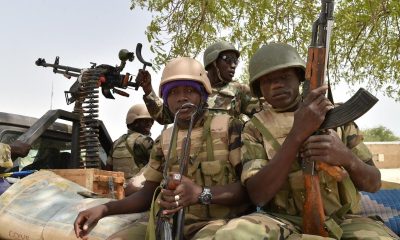
 Top stories10 months ago
Top stories10 months agoGunmen Kill 11 in Southeastern Nigeria Attack, Army Reports
-

 Analysis12 months ago
Analysis12 months agoIsrael and Iran on Edge: Tensions Escalate Amidst Rising Threats
-

 TECH10 months ago
TECH10 months agoZimbabwe Approves Licensing of Musk’s Starlink Internet Service







